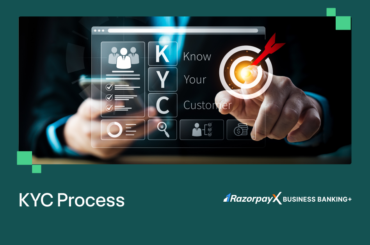In the dynamic world of finance, Lending as a Service (LaaS) has emerged as a game-changer, transforming how businesses and consumers access credit.
Picture this: instead of navigating the labyrinthine corridors of traditional banks, loans are seamlessly integrated into your digital interactions, making the process as effortless as a tap on your smartphone.
With the rapid growth of fintech and lending tech businesses in India, the lending services industry has evolved like none other.
Digital Lending for Your Business
What is Lending as a Service?
At its core, LaaS empowers businesses to offer credit services without the complexities of establishing their lending infrastructure. Through partnerships with LaaS providers, businesses can seamlessly integrate loans into their websites or applications, providing customers with a frictionless experience.
The benefits of LaaS extend far beyond mere convenience. For businesses, LaaS offers a gateway to expanded customer reach, improved customer satisfaction, and enhanced revenue streams. By embedding loans into their offerings, businesses can attract new customers, retain existing ones, and increase average order values.
For example, Shopify, a leading e-commerce platform, embraced Lending as a Service (LaaS) through its “Shopify Capital” model. It integrates lending services into its platform, empowering merchants to access capital for inventory, marketing, or any business need.
Consumers, too, reap the rewards of LaaS. They gain access to a wider range of credit options, streamlined application processes, and faster decision times. LaaS also eliminates the hassle of navigating multiple financial institutions, providing a centralized and user-friendly borrowing experience.
Another great example of lending as a service is BNPL, or Buy Now Pay Later. This small ticket loan offering makes it easier for consumers to purchase items even if they don’t have the cash on hand. Repayment terms are straightforward, and sometimes even allow for a no-cost EMI repayment option.
How Lending as a Service Works
Lending as a service allows businesses to offer credit products and services to their customers without establishing their own lending infrastructure. LaaS providers handle all aspects of the lending process, from underwriting to servicing, so businesses can focus on their core competencies.
Here is how LaaS works:
Step 1: Business Partnership
Business partners with a LaaS provider to integrate lending products into their platform, whether a website, mobile application, or physical store. This partnership allows the business to offer credit options to its customers without establishing its own lending infrastructure.
Step 2: Customer Application
A customer applies for a loan through the business’s platform. The application process is typically streamlined and user-friendly, requiring minimal documentation and paperwork. The customer provides their personal information, financial details, and purpose for the loan.
Step 3: Underwriting and Risk Assessment
The LaaS provider receives the customer’s application and conducts an underwriting process to assess their creditworthiness. This involves evaluating credit history, income, employment, and debt-to-income ratio. The LaaS provider may also use data analytics and machine learning to make informed decisions.
Step 4: Loan Approval and Funding
If the customer’s application is approved, the LaaS provider extends a loan offer with terms and conditions, including the loan amount, interest rate, repayment schedule, and any applicable fees. Once the customer accepts the offer, the loan is funded directly into their designated account.
Step 5: Loan Management and Servicing
The LaaS provider handles the entire loan servicing process, including managing payments, collections, and customer inquiries. The business may also receive a commission or fee for each loan originated through their platform.
Digital Lending for Your Business
Benefits of Lending as a Service
Businesses that provide easy credit options for consumers enjoy many benefits like:
- Increased revenue streams: Businesses can increase their revenue by offering credit products and services to their customers. For example, a retailer could partner with a LaaS provider to offer financing options to customers who purchase big-ticket items.
- Improved customer satisfaction: Customers appreciate the convenience and ease of use of LaaS solutions. For example, a customer can apply for a loan in just a few minutes through a business’s website or application.
- Expanded customer reach: Businesses can reach a wider audience by offering LaaS solutions. For example, a business could partner with a LaaS provider to offer loans to customers in underserved markets.
- Reduced costs: Businesses can save money by using LaaS solutions. For example, a business would not have to hire and train staff to manage its own lending infrastructure.
- Access to new lending products and services: Businesses can access new lending products and services by using LaaS solutions. For example, a business could partner with a LaaS provider to offer Buy Now, Pay Later (BNPL) options to its customers.
Benefits of Lending as a Service for Borrowers
One of the biggest hurdles consumers face when making a purchase is payment. Expensive items like electronics and vehicles can be out of reach for most people. Lending as a Service (LaaS) aims to simplify this step by providing alternative payment options.
When offered options like Buy Now, Pay Later (BNPL), no-cost EMI, and embedded lending, consumers are more likely to purchase since it becomes much more affordable. For instance, BNPL allows consumers to split their purchases into instalments, making them more manageable.
Future of Lending as a Service
According to a report by IIFL Fintech, the lending services industry in India is set to grow to $515 billion by 2030 – making it one of the biggest fintech segments in the country.
With new lending models like P2P lending coming on the market every year, this space is set to continue to experience exponential growth. Of course, like with every fintech endeavour, the RBI is actively studying the industry so it can regulate and restrict.
Already the RBI has published its digital lending guidelines, and we can expect more such regulation from government agencies in the future.





